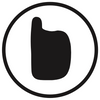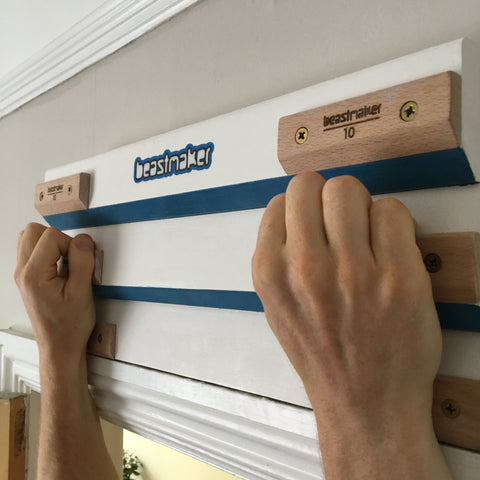Training
Can you believe it's been 10 years since we made the first Beastmaker! A lot has changed. Climbing has become way more popular and with that so has training.
A very brief introduction to training:
People got into climbing rocks. After a while it transpired that some people were doing some secret "training", and those people tended to improve faster than their rock climbing purist buddies. At first "training" involved doing a few pull ups or traversing around on the bottom of the crag before heading off to the pub, but it soon morphed into something much more tweaky, painful and dusty.
The Brits started to build simple boards in the cellars of their Sheffield terraces. Jerry Moffatt was potentially the first in the late 80s - his enthusiasm was such that he was unable to pull off the ground at first and had to remodel the hand holds until he could achieve lift off!
In the early 90s the School Room was built by the "Sheffield Mafia" - a dusty and grotty affair, which was cutting edge at the time, and really helped to push the level of the UK climbers of that era.
Eventually, in the mid 90s actual climbing facilities began to appear around the world. These gyms provided a place to climb and train when it was raining, a focal point for the local climbing scene and a great place to introduce new people to the sport.
Roll on 20 years and the bouldering boom has us fully in its grasp. Training has become accepted, and almost cool in some circles. Fingerboards have become a pleasure to train on and not the coarse, sharp, horror shows of the past.
Indoor climbing facilities have become incredible, offering climbers (and non-climbers) an alluring array of training possibilities. Technical/fun/interesting/powerful boulder problems, fingerboards, campus boards and climbing boards, a nice social atmosphere, coffee and perhaps most crucially a great selection of cakes.
Today it is easier than ever to develop climbing related strength and ability. The facilities available to everyone are generally very good and the abundance of new climbers getting into the sport is really helping to push the standards fowards.
20 years ago there were a handful of climbers in the UK who had climbed font 8a. These days this is a fairly standard grade for serious climbers to achieve, often within just a few years of climbing.
It's exciting to see where climbing will go in the future. Perhaps we will have the Usian Bolt style genetic anomalies who accidentally find climbing when they are 2 years old and train hard for years. Who knows what these guys/girls will achieve.
Font 9B+? French 11c? 1 armed 6mm crimp front levers?
Here we will focus on fingerboarding (or hang boarding for our friends over the pond).
Fingerboards:
Finger strength is the most important strength to have for hard climbing. If you can't hold on, you can't climb upwards!
Fingerboards are the best way to develop finger strength. Full stop. They are totally quantifiable, relatively safe, simple and quick to train on. Pretty much every climbing gym has a fingerboard, and most of you reading this probably have a Beastmaker set up at home.
You essentially have two main methods of training finger strength:
Max hangs of around 10 seconds duration with lots of rest between each hang.
Repeaters of around 7 seconds duration, with short rests, in a set of 5 or 6 hangs.
Here are a couple of example workouts:
Repeaters
Choose a hold/grip type that you feel needs improving.
- Hang for 7 seconds, rest for 3.
- Repeat 6 times.
- Rest for 3 mins
- Choose another hold type and repeat...

At first you may only want to train a few grip types, but as you progress you can add more and more to the mix.
Repeaters focus a little more on the longer end of strength - towards strength endurance. But potentially they are also a great way of developing maximum strength due to the sustained time of contraction of the muscles in the forearm.
Maximum Hangs
Choose a hold/grip type that you feel needs improving.
- Hang for 10/12 seconds
- Rest for 3-5 mins - until you feel totally recovered
- Repeat 3-5 times
- Choose another hold type and repeat...
As with repeaters, you should start out with minimal grip types, but add to it over time. Be very careful not to over do it tho. We wouldn't recommend more than 2 sessions per week on the fingerboard.
Max hangs focus on top end strength. They tend to work by improving neuromuscular connections in your muscles, allowing them to work fast and efficiently, effectively making the most out of their potential strength.
It is a good idea to cycle between Repeaters and Max hangs to vary the training stimulus on your body.
As you improve you can mix up the exercises. To make things harder you can:
- Add weight (no more than 2kg at a time)
- Hang for longer
- Rest less
- Use smaller holds
- Use fewer fingers
- Use 1 arm
The opposites apply for making things easier.
Micros
We have a whole different page for Micros, check it out here


